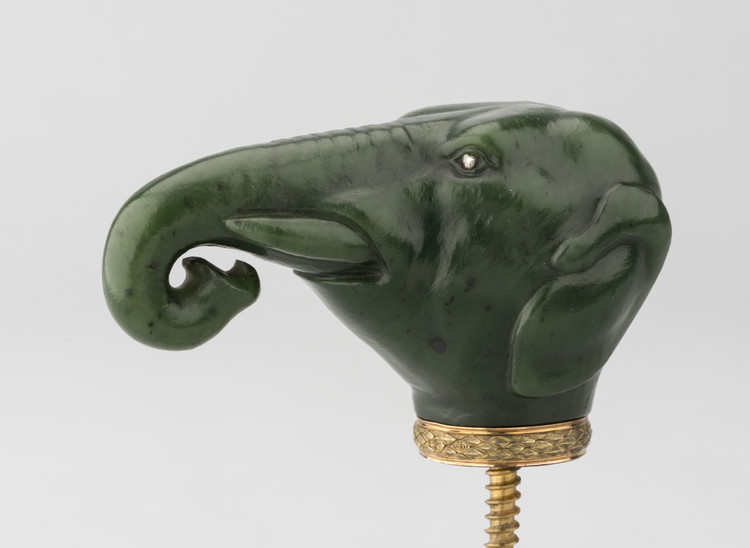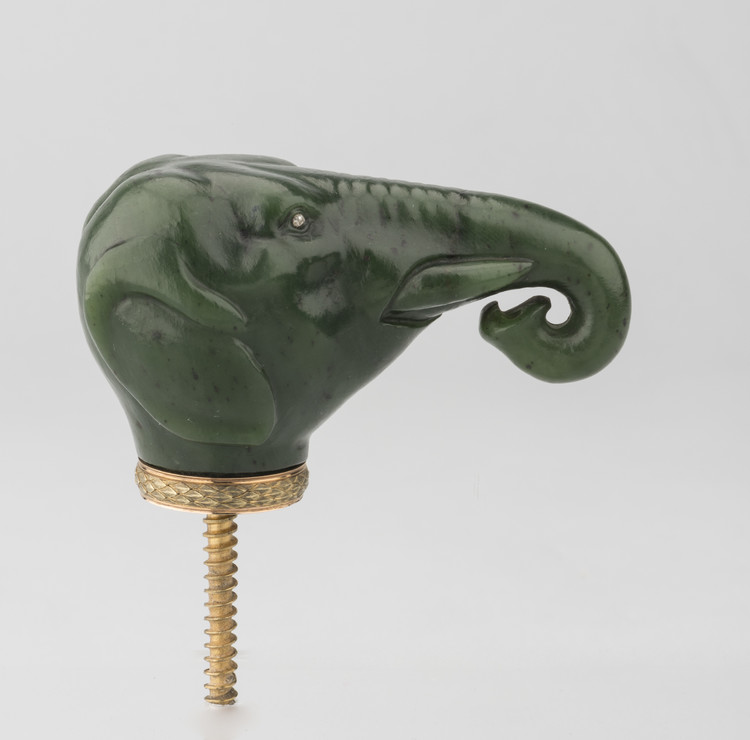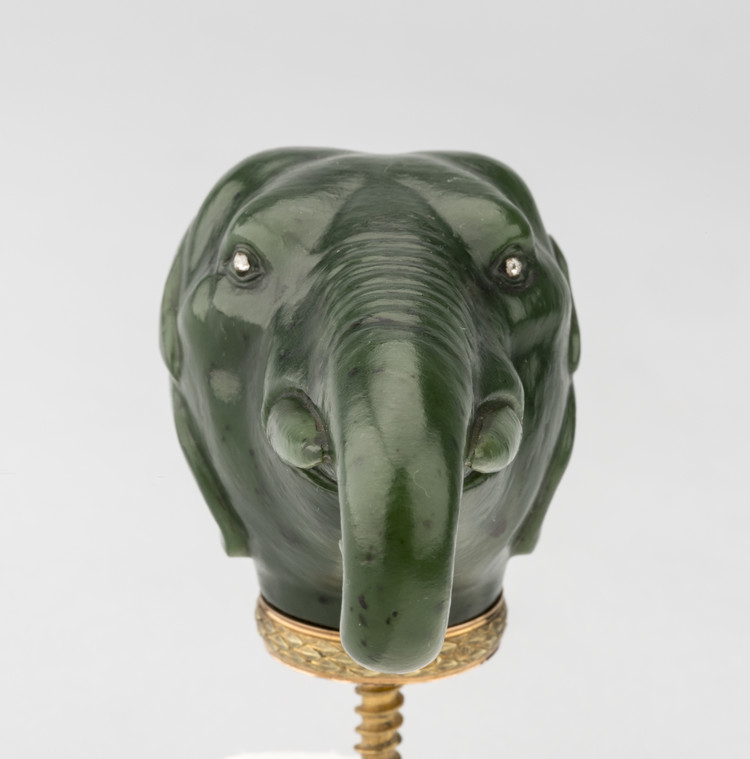Chulalongkorn, the king of Siam (now Thailand), who first visited Russia in 1897, was one of Fabergé’s most prominent clients and even gave him the title of Royal Jeweler and Enameler. In the early 20th century, the House of Fabergé was the first and only company to have trade relations with the Kingdom of Siam. Twice a year one of the firm’s representatives traveled to Southeast Asia with a new set of wares. The firm’s head workmaster, François Birbaum, recalled that the most popular form of jewelry among Siamese ladies were rings, so the House of Fabergé sent a large set of these on its first expedition. However, European sizes turned out to be so large that a set of rings in children’s sizes was made for the following expedition.
A significant role in the Siamese court’s orders was played by carved nephrite, done in both European and traditional Eastern styles. At the time, creating objects with Siamese, Chinese and Indian motifs was new to Russian jewelers and lapidaries, so they often used drawings and photographs brought from those countries as references. This elephant head, carved out of nephrite and set in a golden frame in Mikhail Perkhin’s workshop, served as a walking cane handle. Like the nephrite cigarette case with decorative elephants, it was made for the firm’s Siamese clients.



